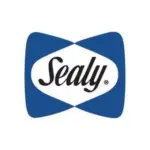Safety Testing

Protecting Children from Toxic Chemicals

Sealy Baby crib mattresses and crib mattress pads meet the Children’s Safe Products Act and Chemicals of High Concern to Children (CHCC) regulations passed by Washington State.
Washington’s Legislature passed a groundbreaking law establishing the nation’s strictest standards for chemicals used in children’s products. There are currently 85 different chemicals of high concern to children that may come in contact with a child that can expose them to levels of toxic chemicals, and companies should report which chemicals are used as part of this regulation.
Parents and caregivers can feel confident that when choosing a Sealy baby sleep product it has been tested and meets these chemical regulations so the child is not touching potentially harmful chemicals.
ASTM International

Sealy Baby crib mattresses meet ASTM Crib Mattress standards to ensure safety and quality are built into every crib mattress.
Crib mattress standards went into effect August 15, 2022. These standards include testing for durability, compression, firmness and proper fit inside standard size cribs.
Additionally, there are new educational tags attached to every crib mattress and the opportunity to register your baby’s mattress with the manufacturer. Look for warning labels and registrations cards with dates of manufacture after August 15, 2022.
Not to worry, Sealy crib mattresses were passing voluntary standards prior to this date, so you can be sure any Sealy baby mattress is made with the highest safety in mind.
The Consumer Product Safety Improvement Act (CPSIA)

Sealy Baby crib mattresses and mattress pads pass The Consumer Product Safety Improvement Act (CPSIA) testing for lead and phthalates and product safety standards.
The Consumer Product Safety Improvement Act (CPSIA) law tests all types of children’s products for safety. This includes crib mattresses and bedding to be tested at independent third-party laboratories to ensure they pass chemical standards for lead, heavy metals and phthalates. All children’s products should undergo rigorous safety tests presented in the toy safety standard. Consumers should be able to feel confident in their purchase by selecting products from reputable companies that offer a Children’s Product Certificate, which shows that it meets the CPSC testing required.
CertiPUR-US® Certified

Sealy crib mattresses and changing pads are made with soybean foam and memory foam using CertiPUR-US® Certified materials made in the USA.
When looking for crib mattresses made with high-density foams or memory foam products, purchase those made with CertiPUR-US® Certified foams. These family-friendly foams are tested for durability, chemical content and indoor air quality. Families can feel confident that CertiPUR-US® certified foams are:
- Made without ozone depleters
- Made without PBDEs, TDCPP or TCEP (”Tris”) flame retardants
- Made without mercury, lead, and other heavy metals
- Made without formaldehyde
- Made without phthalates regulated by the Consumer Product Safety Commission
- Low VOC (Volatile Organic Compound) emissions for indoor air quality
GREENGUARD GOLD Certification

Sealy Baby crib mattresses and changing pads are GREENGUARD GOLD Certified, helping to ensure a healthier indoor environment. Products are tested for harmful chemical emissions at an independent laboratory and certified GOLD if they pass strict standards for people with sensitive immune systems, like babies.
Greenguard® Environmental Institute, part of Underwriters Laboratories, is an independent, third-party evaluation and verification of a product’s chemical emissions, effects on indoor air quality, and effects on children.
Products and materials are tested quarterly for indoor air quality and must meet low chemical and particle emissions for safe indoor use. Over 10,000 volatile organic compounds are tested for!
The GOLD Standard is a more stringent test for consumer products that are designed for use with children.
When shopping for a crib mattress, look for the GREENGUARD GOLD certification to ensure it has been tested to the highest standard for a healthier indoor environment for children, especially newborns and babies who are the most sensitive to their surrounding environment.


